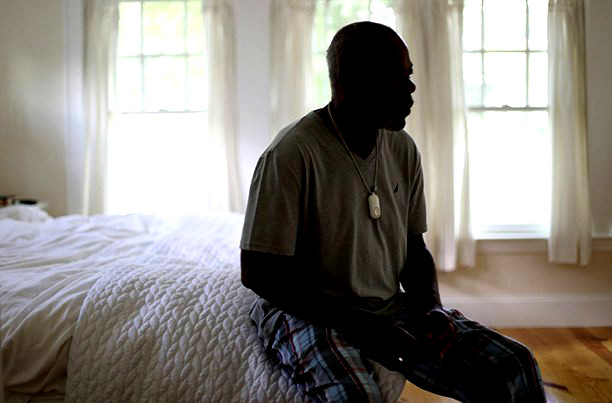
Left to right: Virginia Ctenucha moth, Rosy Maple moth, Pink striped oakworm moth. (photos by Roland D. Hallee)
As my battle with the brown tail moth caterpillars continues, I have seen a variety of other moths emerge over the last week. I was anxious for the brown tail moth caterpillar to turn into a moth so we can cut down on the floating hairs that have been irritating our skin.
While watering my garden on Saturday, I saw a brown tail moth in flight. What a relief to see that.
However, other moths have caught my attention, and here are three of them.
The first one is the Virginia Ctenucha (pronounced ten-oo-chah) … I think.
The Virginia Ctenucha, Ctenucha virginica, is an attractive moth. It is widespread and common and is a member of the Erebidae family which consists of a varied group of striking moths living in woodlands, fields, and gardens, as well as freshwater swamps, marshes, and bogs.
The Virginia Ctenucha is the largest and most broad-winged of wasp moths in North America. Its wingspan is 1-3/8 to 2 inches. This moth has a metallic blue body, which contrasts with the bright orange of its head and the sides of its collar. Its fore wing is a deep grayish brown, with some metallic blue at the base. Its hind-wing is black.
It is endemic to eastern North America, from Newfoundland south to Virginia. According to the University of Alberta, there has been a westward expansion in the last 60 years as it has reached the Canadian rockies and is now found in all Canadian provinces. Larvae feed on a variety of host plants including various grasses, irises, and sedges. Adults drink nectar from flowers including goldenrod.
The adult Virginia Ctenucha flies primarily during the day, but may also come to light at night. Adults feed on nectar at various flowers, such as goldenrod. The larva body surface is black, covered with tufts of cream-colored or black hairs. Caterpillar hosts include grasses, sedges, and irises.
Despite its name, this is a northern moth. The flight period for the Virginia Ctenucha throughout its range is from late spring to late summer, however sighting records suggest that it flies in July. The larva can usually be seen from April to September, but may be found any time of year, since they overwinter.
Another moth I have spotted is the Rosy Maple moth, Dryocampa rubicunda, a small North American moth also known as the great silk moth. It was first described by Johan Christian Fabricius in 1793. The species is known for its wooly body and pink and yellow coloration, which varies from cream or white to bright pink or yellow. Males have bushier antennae than females, which allow them to sense female pheromones for mating.
As the common name of the species implies, the preferred host trees are maple trees. They can also be found on oak trees. Adult females lay their yellow ovular eggs in groups of 10 to 40 on the underside of maple leaves. The emerging caterpillars, also known as the greenstriped mapleworm, mainly feed on the leaves of their host maple trees, particularly red maple, silver maple, and sugar maple. Since the caterpillars eat the entire leaf blade, in dense populations, caterpillars have been known to defoliate trees, resulting in aesthetic rather than permanent damage. However, like all other Saturniid moths, the adult moths do not eat.
The rosy maple moth is the smallest of the silk moths; males have a wingspan of 1.25 – 1.75 inches).
The rosy maple moth lives across the eastern United States and adjacent regions of Canada. Their northern-most range includes the southern regions of Canada, including Ontario, Québec, New Brunswick, Nova Scotia, and Prince Edward Island. Their range extends south along the Atlantic coast of North America to Dade County, Florida, and extends west from eastern Texas through Minnesota.
Caterpillars live and feed in groups until the fourth instar when they become solitary. Adult rosy maple moths are mostly solitary besides during mating.
Individual rosy maple moths typically live for about two to nine months. Between hatching and adulthood, the species undergoes five instars. For moths with longer life spans, much of this time is spent as a pupa over the winter months.
The predators of the rosy maple moth and larvae mostly consist of birds including blue jays, black-capped chickadees, and tufted titmice. The bright coloration of the wings may serve as a defense mechanism to trick predators into thinking they are poisonous and not tasty.
Adults become active in the warmer months of the year. In a study the rosy maple moth was found to vary with changes in temperature, with highest counts at the highest temperature. The recent warm weather may have contributed to its early arrival. Their small size, preventing more effective body temperature control, may also contribute to their preference for warm weather. Adult moths are generally nocturnal, preferentially flying throughout the first third of the night.
Finally, the pink-striped oakworm moth, another species of silk moth.
The female’s wings are purplish red with ochre-yellow. They have thin scales and are almost transparent. The male’s wings are purplish brown with a large transparent space in the middle. The female is larger than the male.
The moth can be found across Canada from Nova Scotia to southeastern Manitoba, and in the United States. It lives in deciduous woodlands and suburbs.
The males attract females by buzzing like a bee. Mating occurs during the morning. It is a rapid process. The male and female stay together for the rest of the day and then the female finds a place to lay eggs, usually under oak leaves.
The caterpillars are gray or greenish with dull brownish yellow or rosy stripes. There are scales on each segment and two long spines. The caterpillars pupate for a short time. They feed on the foliage of oak trees, maples, birches, and hazels. The caterpillar overwinters in the soil as a pupa. Caterpillars that are newly hatched or are in the middle of growing, feed in groups while those that are mature or nearly so feed separately. The caterpillar is about an eighth of an inch long. The head is large in proportion to the body. The inside of the mouth is yellow. The legs are semi-translucent.
Conservation regimes are not required for this species. It is considered a pest of forests because it defoliates trees.
These are all moths I have seen around the door to our office at The Town Line.
Roland’s trivia question of the week:
Which Red Sox player holds the team record for the most Gold Glove Awards with eight?
Answer can be found here.












